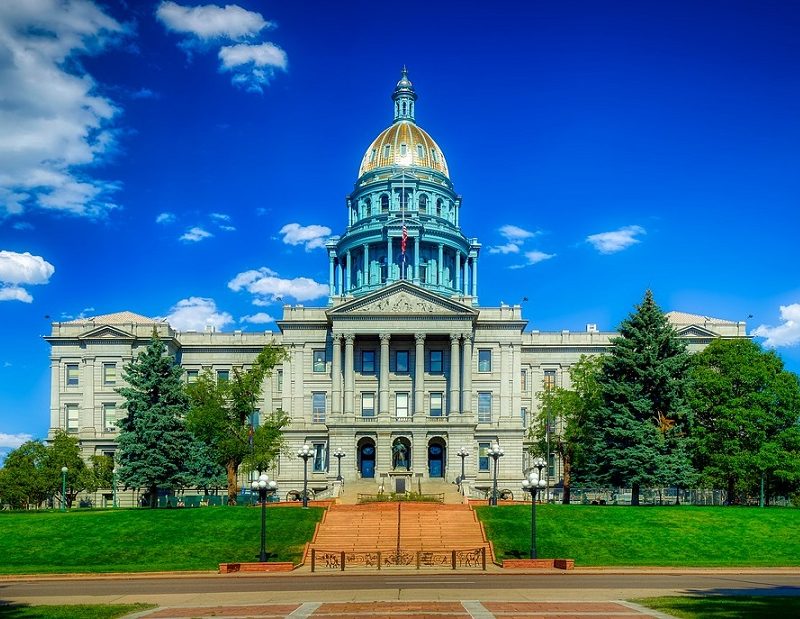Midyear Update: States Make Major Moves
The flurry of energy-related measures enacted by states and cities during the first half of 2019 bring major implications for commercial properties. Here is a sampling.

The Colorado Capitol building. Image via Pixabay
States are often called the laboratories of democracy, and in 2019, state legislatures around the country have engaged in a flurry of energy-related activity, as have their counterparts at the municipal level. Much of the legislation, though not all, have related to green energy. In addition to the actions that took place during the first part of the year, many more proposals are in the works and may turn into enacted laws before the year is out. Here is a sampling of what took place during the first half of 2019.
San Francisco Goes All In: In April, Mayor London Breed proposed a phased transition for the city’s privately owned commercial buildings to renewable energy by 2030. Said to be the first program of its kind in the nation, the plan setsa 2022 deadline for commercial properties 500,000 square feet or larger to derive their power from all-renewable sources. By 2024, commercial buildings at least 250,000 square feet would have to make the transition. In the final stage, the rule would affect buildings at least 50,000 square feet by the end of 2030. In a related move, a task force from the city Department of Environment is preparing a plan for electrification of the city’s buildings. A report is expected next year.
The 50 Percent Club: In April, Nevada boosted its renewable portfolio requirements with legislation signed by Gov. Steve Sisolak. The state from calls for half of its energy supply to come from renewable sources by 2030 and for all-green power by 2050. New Mexico became the third state to commit itself to obtaining energy from exclusively renewable sources. The Energy Transition Act sets a 2045 deadline for the change, and in a step similar to Nevada’s, it gives the state until 2030 to reach the 50 percent threshold for renewable energy and until 2040 to reach the 80 percent level.
Critical Mass: Massachusetts has become the first state in the nation to make battery storage eligible for energy efficiency incentives. Commercial and residential customers alike will be eligible. The program will promote the installation of 30-plus a megawatts of behind-the-meter battery storage in the state. Customers installing new batteries or other storage devices will have the option of a five-year contract with their utility. Participants will earn annual incentives determined by how much they reduced their load during peak demand.
Zero-interest loans will also be available to customers purchasing storage equipment. Some developers plan to offer their own financing plans, which may include leasing and purchasing options. The performance incentives consist of $100 per kilowatt-hour of average load reduction for a targeted dispatch program. For a daily dispatch program, incentives double to $200 per kilowatt-hour average load reduction.
Charged Up: Oregon’s failure to adopt a sweeping climate change strategy made national headlines recently, overshadowing another initiative to expand the network of electric vehicles and cut the state’s carbon footprint. The bill signed in July by Gov. Kate Brown requires half of all registered vehicles in the state to be emissions-free by 2035, as well as 90 percent of all vehicles. That measure should prompt further efforts by Oregon property owners to install sufficient numbers of charging stations.







You must be logged in to post a comment.